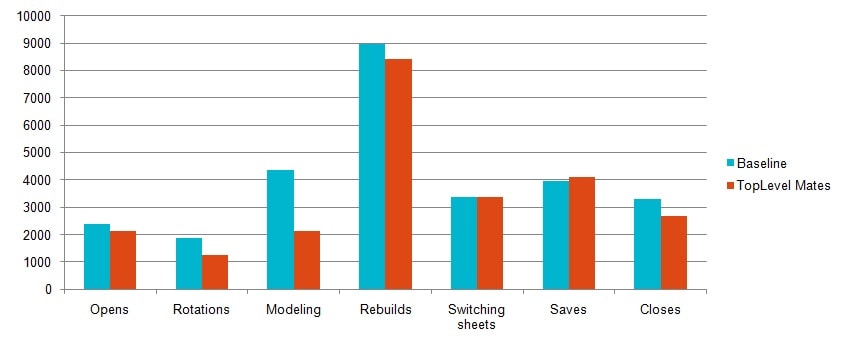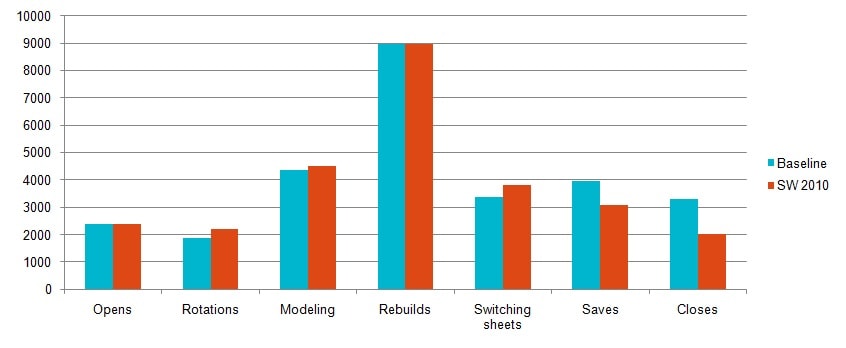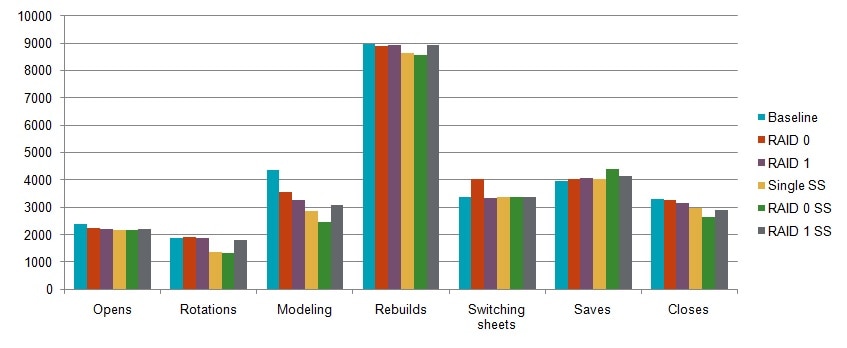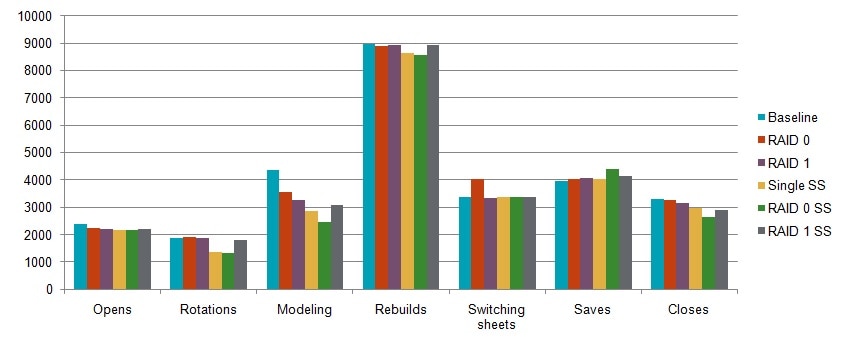Mates and Flexible Sub-Assemblies (MSWP #10)
This article continues our Maximizing SOLIDWORKS Performance series. If you would like a little background information please refer to the first article in the series Maximizing SOLIDWORKS Performance (Results).
Many SOLIDWORKS users have never been shown the importance of mating methodology when working with large assemblies. An Assemblies structure can make a significant difference in the performance of an assembly large or small. These difference in performance is generally much more pronounced in a large assembly due to its shear size.
The models that we used for our base line had a large number of top level mates and flexible sub-assemblies. When SOLIDWORKS brings up an assembly it has to solve all the mates that are at the top level. This includes any mates at the sub-assembly level that are part of a flexible assembly at the top level. The results of structuring the assembly to reduce the top level mates by creating more sub assemblies and turning off the flexible sub assemblies is impressive.

Results:
- Opens 11% faster saving ~4 1/2 mins
- Rotations 34% faster saving ~ 10 1/2 mins
- Modeling 52% faster saving ~37 1/2 mins
- Closes 18% faster saving ~ 10 mins
As we continue through this series of articles I think you will find that modeling methodology and best practises far out strips hardware improvement for potential performance increases. Having the best hardware possible does nothing for you if you don't use strong modeling techniques and use them consistently.
Adrian Fanjoy
Technical Services Director
Computer Aided Technology, Inc.

 Blog
Blog 

